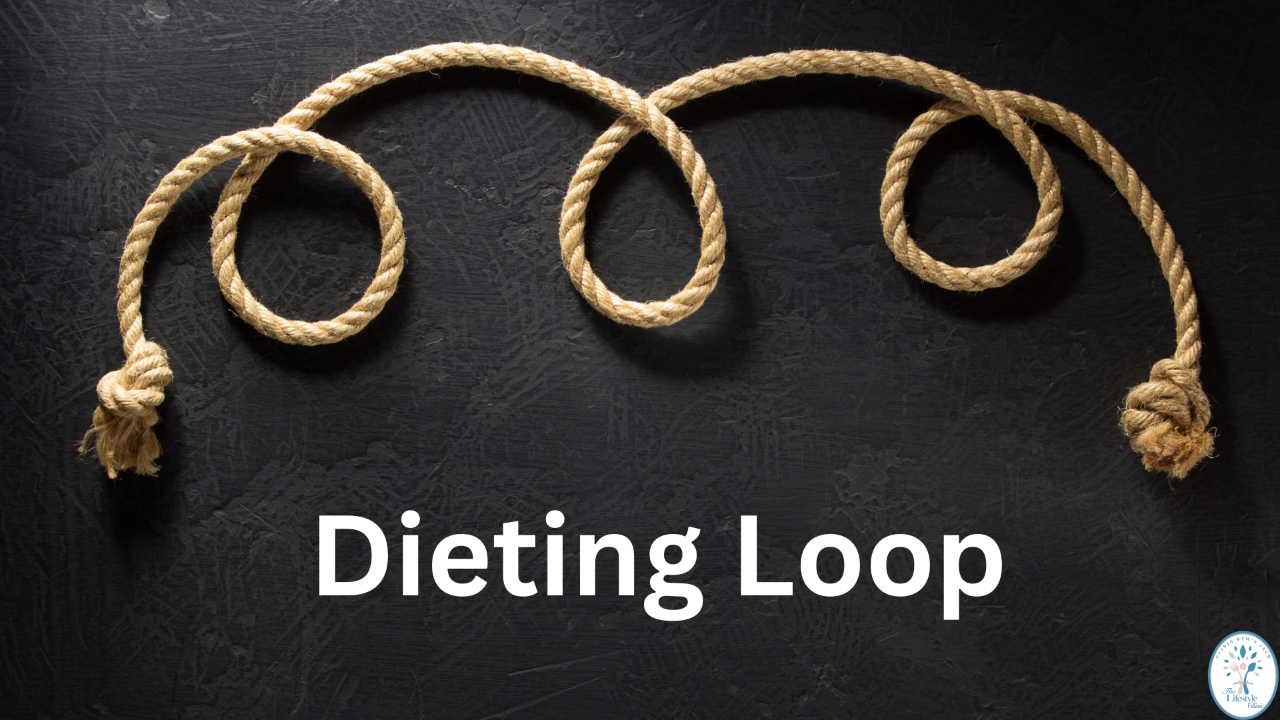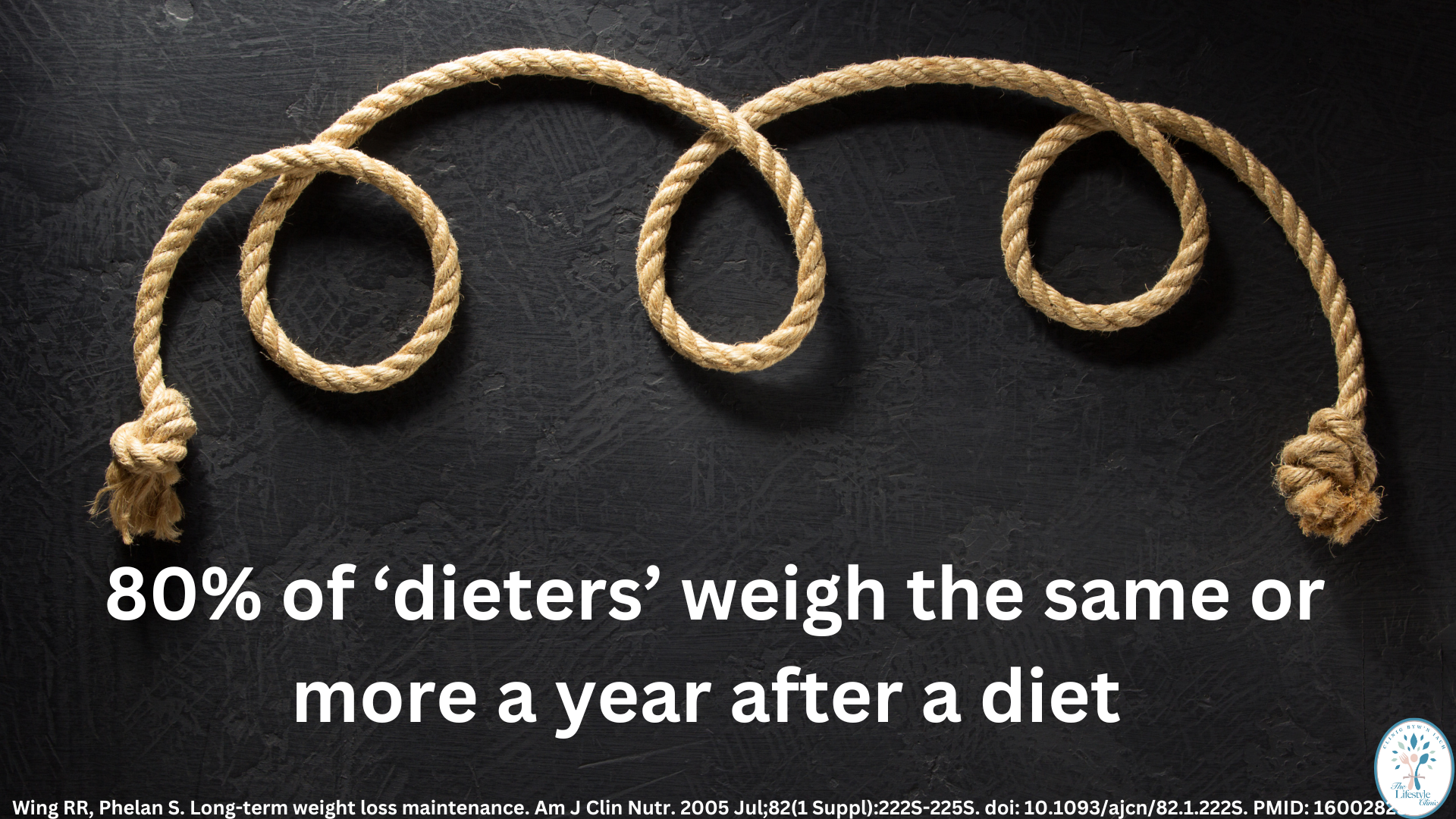
23 Jan Breaking the Dieting Loop: How to Reverse Type 2 Diabetes and Keep Weight Off
Since 2018, I’ve been running weight loss and diabetes remission clinics, and there’s one recurring mistake I see over and over: people get trapped in what I call the dieting loop. Recognising this pattern is the first step toward long-term health and learning how to reverse type 2 diabetes.
What Is the Dieting Loop and Why Does It Matter?
The dieting loop is the cycle many of us know all too well: start a diet, do well, struggle to stick to it, stop, and then restart. It’s the classic “on/off” switch mindset — you’re either ‘good’ or ‘bad’. Over time, this approach teaches your body to resist weight loss and makes sustaining results much harder.
Even if the diet is low-carb, low-fat, calorie-controlled, or another popular plan, the underlying mentality of restriction creates hormonal and psychological patterns that undermine long-term success.

How Does the Dieting Loop Affect Your Body?
When your calorie intake drops suddenly, your brain doesn’t know why — it only senses less food. This triggers a cascade of responses designed to protect your body:
- Lowered heart rate and metabolism
- Reduced body temperature, making you feel cold
- Decreased energy levels and mood dips
- Increased thoughts and cravings for food
All of these changes are your body’s way of trying to regain weight. This is particularly relevant for those aiming to reverse type 2 diabetes, because maintaining healthy weight is a key factor in improving blood sugar control and insulin sensitivity.
Why Do Most Diets Fail to Keep Weight Off?
The dieting loop teaches your body to regain weight. Every time you restrict and then revert, your body becomes more resistant to future weight loss. It’s not a matter of willpower — your brain and metabolism are designed to survive perceived famine.
Research shows that 80% of dieters regain the weight — or more — within a year. This statistic underscores the futility of short-term, restrictive diets as a long-term strategy.

Is Changing What You Eat Enough?
Many people focus solely on diet, thinking that changing their food intake is all they need. But this is just the tip of the iceberg. Beneath it lies sleep, stress management, gut health, and long-term habit formation. These factors collectively influence your ability to maintain weight loss and reverse type 2 diabetes.
What Mindset and Strategies Support Long-Term Success?
Breaking the dieting loop requires more than willpower — it requires systems and psychology. The most successful people in our programmes have ingrained habits that make healthy choices automatic. Their “default mode” supports wellness without constant decision-making or motivation.
By gradually shifting away from extreme on/off dieting, and learning to enjoy food while maintaining healthy habits most of the time, long-term success becomes achievable.

How Do Systems and Education Help With Weight Maintenance?
Our approach teaches people to embed healthy behaviours into their lifestyle through:
- Consistent sleep patterns
- Stress management techniques
- Understanding gut microbiome and its impact on metabolism
- Structured coaching and social support
Each element addresses a different piece of the jigsaw required to maintain weight loss and support those aiming to reverse type 2 diabetes.
Where Can You Learn More About Sustainable Weight Loss and Diabetes Remission?
If this has resonated with you and you want to explore strategies to reverse type 2 diabetes, I recommend watching my free 3-part video series. It explains how to reset metabolism and maintain long-term health naturally.
You can also download my free Blood Sugar Guide for actionable tips on balancing blood sugar and supporting weight management.
Key Takeaway: Break the Loop to Reverse Type 2 Diabetes
The dieting loop is a trap — one that focuses on short-term restriction rather than long-term health. By understanding the psychology and systems behind sustainable habits, you can escape the cycle, maintain weight loss, and take real steps toward reversing type 2 diabetes.
